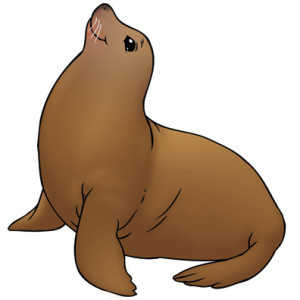
An international team of researchers has discovered that the first land animals moved like seals, according to a news release from the European Synchrotron Radiation Facility (ESRF). For the first time, researchers have reconstructed the elaborate backbone of early tetrapods (the first four-legged animals). They used high-energy X-rays and a new data extraction protocol to reconstruct the backbones of the 360 million-year-old fossils in great detail, giving scientists new information on how the early tetrapods moved from water onto land.
According to researchers, tetrapods are four-limbed vertebrates, like the amphibians, reptiles, birds and mammals of today. Approximately 400 million years ago, early tetrapods were the first vertebrates to take short trips into shallower waters where they used their four limbs for moving around. Scientists continue to debate how exactly vertebrates accomplished this.
Researchers point out that all tetrapods have a backbone, which is a bony structure that is common to all other vertebrates including fish. A backbone is formed from vertebrae connected in a row. Unlike the backbone of humans, in which each vertebra is made up of only one bone, early tetrapods had vertebrae made up of multiple parts.
“For more than 100 years, early tetrapods were thought to have vertebrae composed of three sets of bones – one bone in front, one on top, and a pair behind,” says lead Stephanie Pierce from The Royal Veterinary College in London. “But, by peering inside the fossils using synchrotron X-rays we have discovered that this traditional view literally got it back-to-front.”
Researchers at the ESRF scanned three fossil fragments with X-rays and applied a data extraction method to uncover small details of fossil bones hidden deep inside the rock matrix. The fossilized bones are burried in rock so dense that it takes in most of the X-rays.
“Without the new method, it would not have been possible to reveal the elements of the spine in three dimensions with a resolution of 30 micrometers,” says coauthor Sophie Sanchez from University of Uppsala and ESRF.
Researchers found that what was thought to be the first bone, known as the intercentrum, is actually the last in the series. The re-arrangement in vertebral structures has significant implications for the functional evolution of the tetrapod backbone, say researchers.
“This study fundamentally revises our current understanding of vertebral column evolution in the earliest tetrapods and raises questions about the presumed vertebral architecture of tetrapodomorph fish and later, more crownward, tetrapods,” wrote the authors in their study.
Researchers think that their findings will help them better answer the much-debated questions: How did early tetrapods move into shallower waters and how did they then transfer to land?
“By understanding how each of the bones fit together we can begin to explore the mobility of the spine and test how it may have transferred forces between the limbs during the early stages of land movement,” says Pierce.
Researchers also discovered that Ichthyostega had up until now unknown skeletal features, including a string of bones stretching down the middle of its chest.
“These chest bones turned out to be the earliest evolutionary attempt to produce a bony sternum,” says Jennifer Clack from the University of Cambridge. “Such a structure would have strengthened the ribcage of Ichthyostega, permitting it to support its body weight on its chest while moving about on land.”
These findings support work by Pierce and Clack that revealed Ichthyostega moved across flat ground like a seal.
“The results of this study force us to re-write the textbook on backbone evolution in the earliest limbed animals,” says Pierce.
“At the ESRF, the new data extraction protocol makes it possible to study fossils in dense and heavy rock in unprecedented detail. What we have seen today is only the beginning of more surprises to come,” adds Sanchez.
The study’s findings were published Sunday in the journal Nature.
By James Fluere
Source: Science Recorder – http://goo.gl/vhwUy


